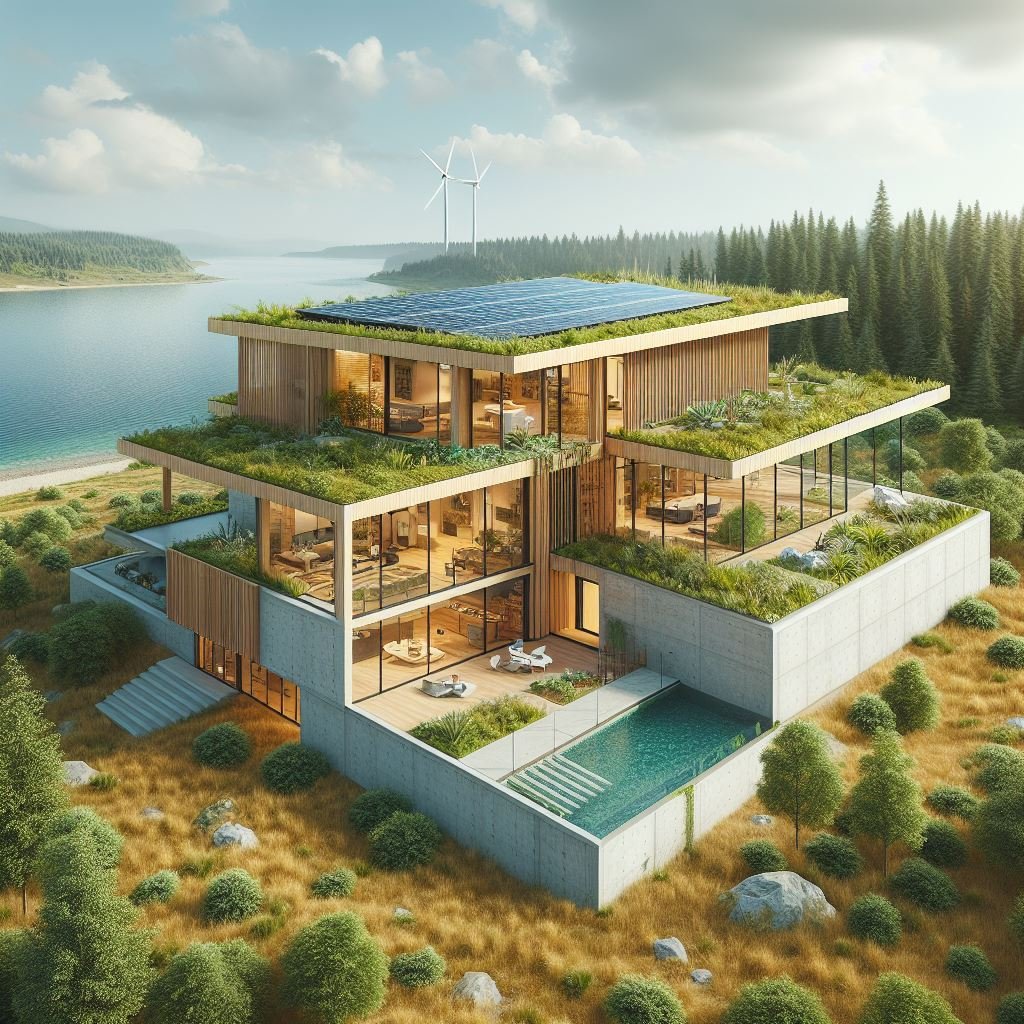Redefining Sustainable and Holistic Architecture
Discover how sustainable and holistic architecture is being redefined, focusing on innovative designs that harmonize with the environment and enhance well-being.
In the ever-evolving field of architecture, the pursuit of sustainability and holistic design has become paramount. Companies like Vera Iconica are leading the charge, integrating environmentally conscious practices with a comprehensive approach to well-being. This blog post explores the principles and practices that define sustainable and holistic architecture in the modern era.
Principles of Sustainable Architecture
Energy Efficiency
One of the core principles of sustainable architecture is energy efficiency. This involves designing buildings that consume less energy through the use of high-performance insulation, energy-efficient windows, and advanced HVAC systems. Incorporating renewable energy sources such as solar panels and wind turbines also plays a significant role in reducing the carbon footprint of buildings.
Sustainable Materials
Using sustainable materials is crucial for reducing the environmental impact of construction. Architects are increasingly opting for materials that are recycled, reclaimed, or sourced from renewable resources. Bamboo, reclaimed wood, and recycled metal are popular choices that provide both durability and aesthetic appeal.
Water Conservation
Water conservation is another critical aspect of sustainable architecture. Implementing systems for rainwater harvesting, greywater recycling, and efficient plumbing fixtures helps reduce water usage. Landscaping with native plants that require minimal irrigation also contributes to water conservation efforts.
Holistic Design Approaches
Biophilic Design
Biophilic design is a holistic approach that seeks to connect occupants with nature. This can be achieved through the incorporation of natural elements like indoor plants, water features, and natural light. Studies have shown that biophilic design can enhance mental well-being, reduce stress, and improve overall health.
Wellness-Focused Interiors
Holistic architecture prioritizes the health and well-being of occupants. This involves designing interiors that promote physical and mental health. Features such as ample natural light, good air quality, and ergonomic design elements contribute to creating a healthy living environment. Spaces designed for relaxation, meditation, and physical activity are also essential components of wellness-focused interiors. Incorporating a home spa or sauna can further enhance this wellness-focused approach, providing a space for relaxation and rejuvenation. Sun Valley Saunas offers high-quality barrel saunas that seamlessly blend into your home or outdoor space, promoting both physical and mental well-being.
Community and Social Connectivity
Holistic architecture extends beyond individual well-being to encompass community and social connectivity. Designing spaces that encourage social interaction and foster a sense of community is vital. This can include communal gardens, shared recreational areas, and multipurpose community centers that bring people together.
Integrating Technology
Smart Building Systems
The integration of smart building systems is transforming sustainable and holistic architecture. These systems use advanced technologies to monitor and control various aspects of the building environment, such as lighting, heating, and security. Smart systems can optimize energy usage, enhance security, and improve the overall comfort of occupants.
Sustainable Construction Techniques
Innovative construction techniques are also essential for achieving sustainability. Prefabrication, modular construction, and 3D printing are methods that reduce waste, minimize construction time, and lower overall environmental impact. These techniques allow for more efficient use of resources and offer greater flexibility in design.
Conclusion
Redefining sustainable and holistic architecture involves a commitment to environmental stewardship and the well-being of occupants. By embracing principles such as energy efficiency, sustainable materials, and biophilic design, architects can create spaces that are both eco-friendly and conducive to health and happiness. Companies like Vera Iconica are setting new standards in the industry, proving that it is possible to harmonize the built environment with the natural world and create a better future for all.

